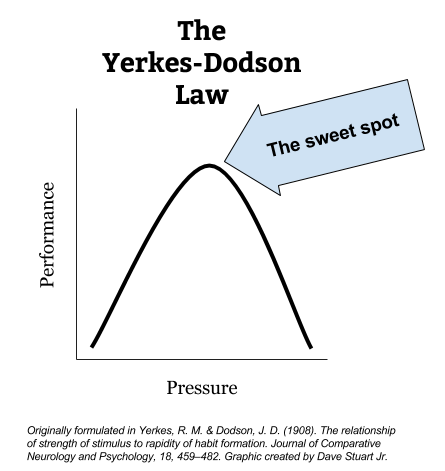Hey there, colleague — how are you doing? We've just finished our state testing at my school, and after a couple days of proctoring, I gotta tell ya — I'm ready to do some teaching. 🙂
So here's the deal. The way I see it, there are two ways to end this school year.
- Scenario 1: We can crawl across the finish line, counting down the seconds until it's summer break because we can't wait for a rest.
- OR
- Scenario 2: We can march across the finish line, limping a bit from the hardships of these past years, heads held high, hearts full, grateful for the growth behind us and the growth to come.
In both scenarios, we're still going to count down to the end of the year. We should. But in the second scenario, we're counting down something that is precious but fleeting: the days remaining in this year. In the first scenario, on the other hand, we're just wishing these days away.
Both scenarios require me to live and work through the remaining days of the year. But the second one gives me a chance to play, to practice, to experiment, to — dare I say? — enjoy the young people I've been with this year, with all their quirks and quibbles and challenges and needs.
So I'm in for Scenario 2. And I hope you're in, too. I'm providing two avenues to help:
- Over the next few weeks, I'll share some brief articles on playful experiments to run in your classroom that help with student motivation.
- Next Wednesday, I'm hosting the best PD day ever — all the details are here. And maybe I'm being too dramatic saying the best ever, but here's what I mean:
- It's a few hours of content with me and like-hearted colleagues all over — content specific to end-of-year playfulness.
- It's a few hours of independent study time for you to be a professional and reflect, learn, dig, grow, plan.
- It ends with a happy hour where we talk teaching and life.
- Registration includes a lifetime license to my acclaimed Student Motivation Course and an asynchronous learning experience that I made with lots of love for you and our work.
Would you consider going to your principal and pretty-pleasing your way into registering with a colleague or two from your school? If there's a group rate you'd like to propose that works with your principal's budget, just email me and we'll get it set up.
On to today's experiment.
Today's thought: a time for challenge, a time for play
The other day I received an email newsletter offering me a “challenge” for ending the school year. And I realized, “Dang — I really don't like the idea of being challenged right now. Life is challenge enough; teaching is challenge enough. Ugh.”
As I kept thinking, I wondered if what was happening in my reaction had a lot to do with our old friend the Yerkes-Dodson Curve.

And then it occurred to me:
- When folks are on the left side of the curve, like I was, the last thing they'll respond well to is someone offering a challenge; these folks are over-pressured already, and challenge is the language of pressure. You for sure don't want to challenge a person that is experiencing over-pressurization — not unless you'd like to annoy them, that is. 🙂
- For these folks, you're way better off offering a chance to play, to enjoy, to relax, to let off steam.
- BUT, when folks are on the right side of the curve, then what they absolutely need to experience a performance enhancement IS a challenge! They are under-pressurized and, as a result, are probably experiencing boredom and ennui.
- For them, absolutely offer a challenge — and emphasize what about it is so challenging.
Now let's bring this home to your students
I want you to think of two young people on your roster right now.
- One that seems bored and listless
- One that seems anxious, over-pressured, or afraid to fail
For the bored one, take 30-60 seconds to pull them aside and speak to them with the language of challenge. Offer them something, some way of viewing your class this next week, meant to shift them from under-pressured to properly pressured.
And for the one that's afraid to fail, take them aside for 30-60 seconds and say something like,
“Hey, Liane — it seems like lately you've been really getting down on yourself. I hear you saying things like, ‘I'm just going to fail anyway.' And the other day I was thinking about that, and about how bad it feels when you're always wondering if you're going to fail. And so I thought, ‘You know what? I'm going to make Liane an offer. What if for the next week we just said that the only way to fail was to get down on ourselves? What if we made class into a chance to grow and be with people we like — not some dark place where we're constantly failing to prove our worth?' How does that sound, Liane? I really want you to consider us doing that.”
To me, slight approach differences like this are the heart of effective differentiation. You're not differentiating the content students are learning or the assignments in your classroom so much as you're differentiating the ways in which you approach the hearts of your young people.
In closing
If you're currently bored in your job, then I CHALLENGE you to try something like what I've just described.
But if you're currently stressed or fatigued, then I invite you to play with these ideas with the students in your care.
🙂
Best to you, colleague,
DSJR
Leave a Reply